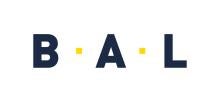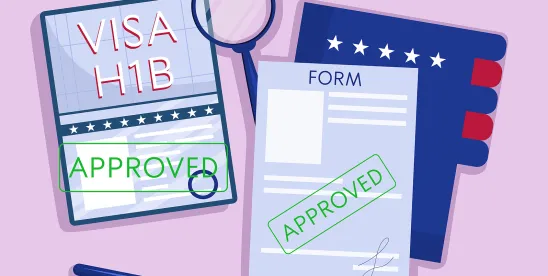As an HR or global mobility professional, your plate is already full. Adding visa requirements to the mix can feel overwhelming. But by familiarizing yourself with the different visa types, you can smoothly navigate the evolving immigration landscape and enhance your recruitment and mobility strategies.
To support your global hiring and relocation efforts, this article explores some of the most common nonimmigrant visa types and their specific requirements.
H-1B visas: Specialty occupations
The H-1B visa is designed for foreign workers in specialty occupations that require theoretical or technical expertise in specialized fields such as technology, engineering and healthcare.
Key requirements:
- Employer sponsorship: The employer must offer a job that requires a bachelor’s degree or higher in a specific specialty.
- Labor condition application: The employer must file a labor condition application, or LCA, with the Department of Labor, ensuring that hiring the foreign worker will not adversely affect the wages and working conditions of U.S. workers.
- Educational qualifications: The candidate must possess the necessary degree or its equivalent in education and/or work experience.
BAL insight: Previously, the H-1B lottery allowed multiple registrations for the same beneficiary by different employers, increasing the chances for certain individuals. In 2024, USCIS updated its rules and now limits registrations to one per beneficiary, the so-called beneficiary-centric process, regardless of how many employers submit registrations on the foreign national’s behalf. This change aims to level the playing field and give every applicant an equal chance of selection.
L-1 visa: Intracompany transferees
The L-1 visa is for employees transferring within their multinational company to a U.S. office. There are two categories: L-1A for executives and managers and L-1B for employees with specialized knowledge.
Key requirements:
- Qualifying relationship: The foreign national and the U.S. entity must have a qualifying relationship (parent, subsidiary, affiliate or branch).
- Employment duration: The employee must have worked for the foreign entity for at least one continuous year within the past three years, excluding any time spent in the U.S. during those three years.
- Position requirements: For L-1A, the position must be managerial or executive in nature. For L-1B, the position must require specialized knowledge.
BAL insight: L-1 applicants can apply under a company’s approved Blanket L petition, which allows applications for the visa directly at a U.S. Embassy or Consulate abroad or a Canadian port of entry (Canadians only). A company may qualify for a Blanket L petition by meeting certain regulatory criteria, including engaging in commercial trade or services, doing business for one year or more with an office in the U.S. and having three or more domestic and foreign branches, subsidiaries and affiliates. L-1B applicants are not eligible to apply under the Blanket if they do not have at least a bachelor’s degree in a related field.
O-1 visa: Individuals with extraordinary ability or achievement
The O-1 visa is for individuals with extraordinary ability in the sciences, arts, education, business or athletics, or extraordinary achievements in the motion picture and television industry.
Key requirements:
- Extraordinary ability defined: Having “extraordinary ability” in the fields of science, education, business or athletics means a level of expertise indicating that you are one of a small percentage who have risen to the very top of the field. Whereas extraordinary ability in the arts means distinction, i.e. a high level of achievement in the arts.
- Employer sponsorship: The O-1 petition must be filed by the foreign national’s employer or a U.S. agent (also known as “petitioner”).
TN visa: The United States-Mexico-Canada Agreement
The TN visa allows qualified Canadian and Mexican citizens to seek temporary entry into the United States to engage in business activities at a professional level.
Key requirements:
- Citizenship: The applicant must be a citizen of Canada or Mexico.
- Job offer: The applicant must have a prearranged full-time or part-time job with a U.S. employer.
- Professional qualifications: The position must qualify as a profession under one of the enumerated occupations in the US-Mexico-Canada Agreement, and the applicant must possess the qualifications to practice in the profession, also as enumerated in the USMCA.
H-1B1 visa: temporary specialty occupation workers from Chile or Singapore
The H-1B1 visa allows specialty occupation workers from Chile and Singapore to temporarily work in the U.S. An annual maximum of 1,400 Chilean national professionals and 5,400 Singaporean national professionals in specialty occupations may work in the U.S. in H-1B1 status.
Key requirements:
- Citizenship: The applicant must be a citizen of Chile or Singapore.
- Position requirements: The U.S. position must require at least a bachelor’s degree in a relevant field and the employee must have a relevant degree (or equivalent experience). The salary must be paid by the U.S. company and meet prevailing wage levels.
- Not portable: The H-1B1 visa is not portable, meaning the foreign national cannot start working for a new employer in the U.S. until a change of employer petition has been approved.
E-3 visa: certain specialty occupation workers from Australia
The E-3 visa allows Australian professionals in certain specialty occupations to temporarily work in the U.S. A maximum of 10,500 Australian citizens per fiscal year are allowed to work in the U.S. in E-3 status.
- Citizenship: The applicant must be a citizen of Australia.
- Position requirements: The U.S. position must require at least a bachelor’s degree in a relevant field and the employee must have a relevant degree (or equivalent experience). The salary must be paid by the U.S. company and meet prevailing wage levels.
Final thoughts: emerging visa trends
- Application fee price hikes. USCIS recently implemented a massive overhaul of its fee structure for immigration filings, with fees rising significantly across the board.
- Increased scrutiny and compliance. USCIS has increased scrutiny on visa petitions, particularly for H-1B and L-1 visas. Employers must ensure that their petitions are thoroughly documented and compliant with all regulations.
- The political landscape. Immigration policies are continually evolving. With the shifting political landscape and the upcoming U.S. presidential election, it’s even more important to stay informed about legislative changes so you can adjust your mobility strategy and remain prepared amid political uncertainty.




 />i
/>i
